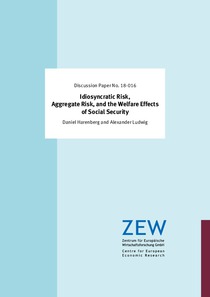Idiosyncratic risk, aggregate risk, and the welfare effects of social security
"We ask whether a pay-as-you-go financed social security system is welfare improving in an economy with idiosyncratic productivity and aggregate business cycle risk. We show analytically that the whole welfare benefit from joint insurance against both risks is greater than the sum of benefits f...
| Main Authors: | , |
|---|---|
| Institution: | ETUI-European Trade Union Institute |
| Format: | TEXT |
| Language: | English |
| Published: |
Mannheim
2018
ZEW |
| Subjects: | |
| Online Access: | https://www.labourline.org/KENTIKA-19390347124911185299-idiosyncratic-risk,-aggregate-.htm |
| Summary: | "We ask whether a pay-as-you-go financed social security system is welfare improving in an economy with idiosyncratic productivity and aggregate business cycle risk. We show analytically that the whole welfare benefit from joint insurance against both risks is greater than the sum of benefits from insurance against the isolated risk components. One reason is the convexity of the welfare gain in total risk. The other reason is a direct risk interaction which amplifies the utility losses from consumption risk. We proceed with a quantitative evaluation of social security’s welfare effects. We find that introducing an unconditional minimum pension leads to substantial welfare gains in expectation, even net of the welfare losses from crowding out. About 60% of the welfare gains would be missing when simply summing up the isolated benefits." |
|---|---|
| Physical Description: | 77 p. Digital |

